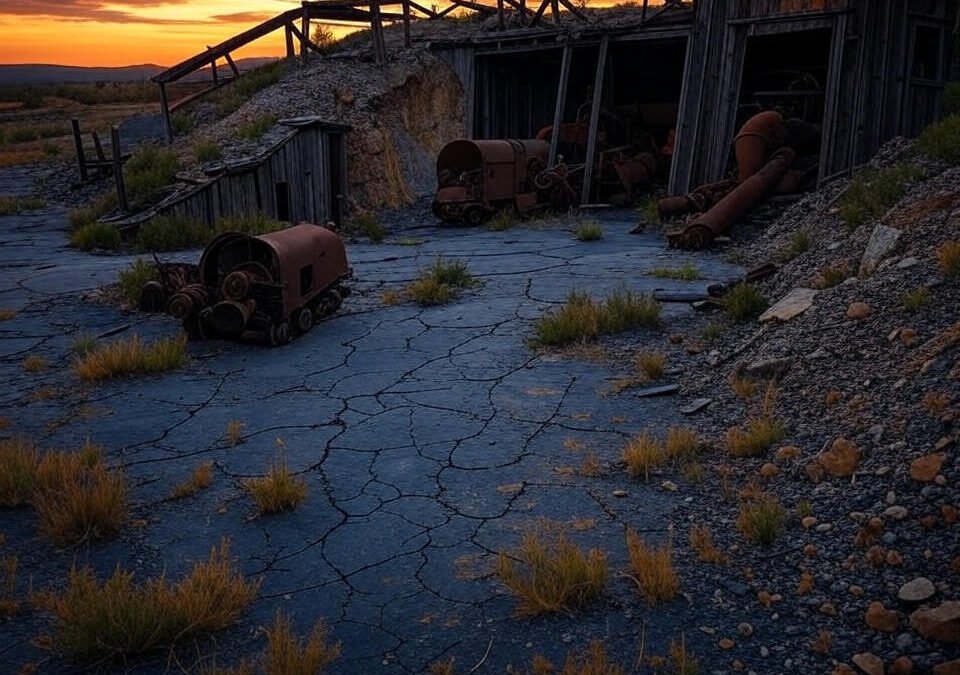The Hidden Cost of Mine Closures: A Look at the Mental Toll on Workers and Communities
Imagine waking up one day to find out that the place you’ve worked at for years—your second home—is closing down. The news hits you like a ton of bricks, and suddenly, your world is turned upside down. This is the harsh reality for many workers in the mining industry, especially with recent closures like the Assmang Cato Ridge Smelter in South Africa. But it’s not just the workers who feel the weight of this loss. The ripple effects touch entire communities and echo throughout the mining industry itself. Today, we’re diving into the mental toll of mine closures and why it’s a conversation we can’t afford to ignore.
The Assmang Cato Ridge Smelter Closure: A Case in Point
Let’s start with the facts. Earlier this year, Assmang Proprietary Limited announced the permanent closure of its Cato Ridge Works Ferrochrome Smelter in KwaZulu-Natal, South Africa. By August 31, 2025, the smelter will be shut down, leaving 600 employees—358 permanent and 193 contract workers—without jobs. The reasons? Weak global manganese alloy prices and skyrocketing electricity costs, which have surged by over 930% since 2008. Despite hopes for tariff reductions, it wasn’t enough to save the operation. This closure isn’t just a headline; it’s a life-altering event for hundreds of families.
But Assmang isn’t alone. We’ve seen similar stories unfold across the globe. Take the Blyvooruitzicht gold mine, also in South Africa, which closed its doors and left over 1,700 workers jobless. Or consider the coal mines shutting down in regions like Appalachia in the U.S., where the shift to renewable energy has accelerated closures. These aren’t just statistics—they’re reminders of a growing trend in the mining industry, one that comes with a heavy human cost.
The Mental Toll on Workers: More Than Just a Paycheck
For the workers, a mine closure is more than losing a job; it’s losing a part of their identity. Many have spent decades in the industry, honing skills that may not easily transfer to other fields. The fear of not being able to provide for their families is overwhelming. As one former miner from Blyvooruitzicht shared, “It’s like the ground beneath you disappears. You don’t know where to turn.”
The emotional toll is staggering. Studies show that job loss, especially in industries like mining where employment is often generational, can lead to anxiety, depression, and even substance abuse. The uncertainty of what comes next—Will I find another job? Can I pay my bills?—gnaws at mental health. Companies often offer support services, but for many, these feel like band-aids on a much deeper wound. The reality is that the road to recovery is long, and not everyone has access to the help they need.
The Community: When the Lifeblood Dries Up
Mining towns are built around the mine. It’s not just a workplace; it’s the lifeblood of the community. When a mine closes, the impact is immediate and brutal. Local businesses lose customers as unemployed workers tighten their belts. Schools see enrolment drop as families move away in search of new opportunities. Public services strain under the pressure of a shrinking tax base. In Cato Ridge, the closure is already being called a “blow to an already struggling regional economy.”
The mental effect on the community is just as profound. There’s a collective sense of grief and loss, as if the town’s heartbeat has stopped. Community leaders and local governments are left scrambling to pick up the pieces, but revitalizing a mining town isn’t easy. As one resident of a former coal town in Appalachia put it, “It feels like we’re being left behind. The world moves on, but we’re stuck here, trying to figure out how to survive.”
The Mining Industry: A Wake-Up Call
For the mining industry as a whole, closures like these are a stark reminder of its volatility. They highlight the need for diversification, innovation, and a focus on sustainability to stay competitive. But they also underscore the human cost of these transitions, which is often overlooked in discussions about economic efficiency and progress. Industry professionals, from executives to engineers, feel the weight of these closures too. There’s a sense of instability and uncertainty about the future. Will my mine be next? How do we balance profitability with responsibility to our workforce?
Mine closures signal broader shifts—whether it’s the decline in demand for certain minerals or the push towards automation. While these changes are necessary for the industry’s survival, they come with a mental toll that can’t be ignored. It’s a wake-up call for the sector to prioritize not just the bottom line, but the well-being of the people who make it all possible.
Stories of Resilience: Finding Hope Amid the Loss
Despite the challenges, there are glimmers of hope. Communities have shown remarkable resilience in the face of mine closures. In some cases, support groups, retraining programs, and community-led initiatives have helped workers transition to new careers. For example, former miners in the U.K. have found success in renewable energy projects, while others have started small businesses to serve their towns. These stories remind us that, even in the darkest times, there is potential for renewal.
But resilience isn’t a given—it requires support. Governments and mining companies have a responsibility to plan for closures and mitigate their impact. This means providing adequate notice, offering retraining and relocation assistance, and investing in community development projects. Unfortunately, these measures aren’t always implemented effectively, leaving many to fend for themselves.
What Can We Do?
As we reflect on the stories of mine closures and their impact, let’s remember that behind every statistic is a human being with hopes, dreams, and fears. So, what can we do to help?
- Support mental health initiatives: Advocate for better access to counselling and support services for affected workers and communities.
- Push for fair transition policies: Encourage governments and companies to prioritize the well-being of workers in their closure plans.
- Foster community resilience: Get involved in or donate to programs that help mining towns diversify their economies and build new futures.
Mine closures are more than just economic events—they’re deeply personal. By acknowledging the mental toll and taking action, we can help ensure that no one is left behind when the mine shuts down.
Resources for Support and Advocacy:
- Mind South Africa – Mental health support for South Africans.
- Fair Transition Coalition – Advocacy for fair policies in mining communities.
- Mining Community Resilience Fund – Support for community-led initiatives in mining towns.

